
Wonder Boy in Monster Land, known by its original arcade release as Wonder Boy: Monster Land, is a platform video game developed by Westone Bit Entertainment and released by Sega in Japanese arcades in 1987 and for the Master System in 1988, with a number of other home computer and console ports following. The game is the sequel to the 1986 game Wonder Boy and takes place eleven years after the events in the previous game. After enjoying over a decade of peace on Wonder Land following the defeat of the evil King by Tom-Tom, later bestowed the title "Wonder Boy", a fire-breathing dragon called the MEKA dragon appeared; he and his minions conquered Wonder Land, turning it into "Monster Land". The people, helpless due to their lack of fighting skill, call for Wonder Boy, now a teenager, to destroy the monsters and defeat the MEKA dragon. Players control Wonder Boy through twelve linear levels as he makes his way through Monster Land to find and defeat the MEKA dragon. Players earn gold by defeating enemies and buy weapons, armor, footwear, magic, and other items to help along the way.
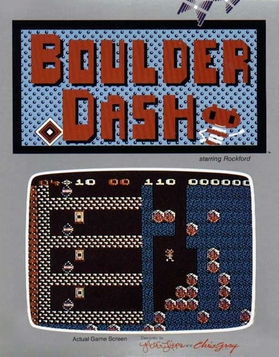
Boulder Dash is a 2D maze-puzzle video game released in 1984 by First Star Software for Atari 8-bit computers. It was created by Canadian developers Peter Liepa and Chris Gray. The player controls Rockford, who collects treasures while evading hazards.

The Settlers is a city-building video game with real-time strategy elements, developed and published by Blue Byte Software. Released in Germany for Amiga in June 1993, and in the United Kingdom in November, it is the first game in The Settlers series. In 1994, Blue Byte and Massive Development ported the game to DOS. Blue Byte published the DOS version in Europe under its original title in May, but in North America, it was published in December by SSI as Serf City: Life is Feudal. In 2018, the game was re-released for Microsoft Windows as The Settlers: History Edition.
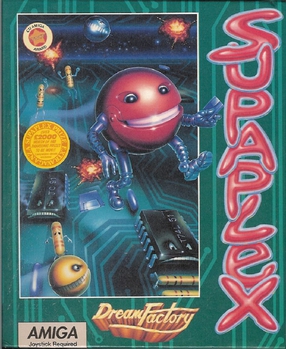
Supaplex is a video game created by Philip Jespersen and Michael Stopp, two Swiss students, and published by Digital Integration in 1991. It is an extended clone of Boulder Dash.
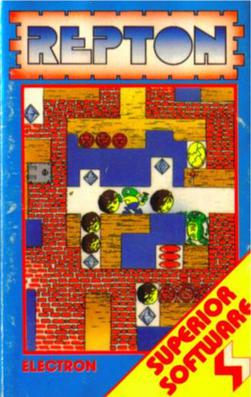
Repton is a video game originally developed by 16-year-old Briton Tim Tyler for the BBC Micro and Acorn Electron and released by Superior Software in 1985. The game spawned a series of follow up games which were released throughout the 1980s. The series sold around 125,000 copies between 1985 and 1990 with Repton 2 selling 35,000 itself. The games have since been remade for several modern systems, including iRepton for the iPhone / iPod Touch in 2010, and Android Repton 1, Android Repton 2 and Android Repton 3 from 2016 to 2018.

The Sentinel, released in the United States as The Sentry, is a puzzle video game created by Geoff Crammond, published by Firebird in 1986 for the BBC Micro and converted to the Commodore 64, Amstrad CPC, ZX Spectrum, Atari ST, Amiga and IBM PC compatibles. The Sentinel was among the first games to use solid-filled 3D graphics on home computers. It won numerous awards upon release and has since appeared on several "best video games of all time" lists.
Artworx was a Naples, Florida software company that produced and supported a line of computer games from 1981 to 2020. It is named after the founder's given name. At first the company published a variety of games, including titles in adventure and arcade-action genres, but were later best known for a strip poker series.
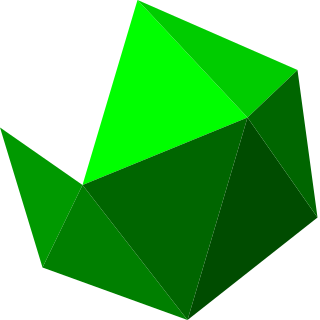
Rocks'n'Diamonds is a puzzle video game with elements of Boulder Dash, Supaplex, Emerald Mine, Solomon's Key, and Sokoban clone. It is free software under the GNU GPL-2.0-only license created by Artsoft Entertainment and designed by Holger Schemel.
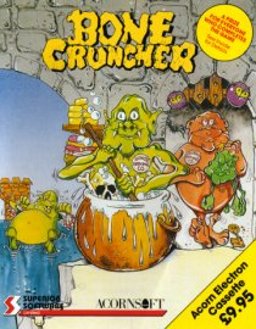
Bone Cruncher is a puzzle video game for the Acorn Electron, BBC Micro, and Commodore 64 first published by Superior Software in 1987. It uses the "rocks and diamonds" mechanics of Boulder Dash. An Amiga version was released in 1988.

Flood is a 1990 platform game developed by Bullfrog Productions. It was published for the Amiga and Atari ST by Electronic Arts. The objective is to collect all the litter and find the exit to the level.
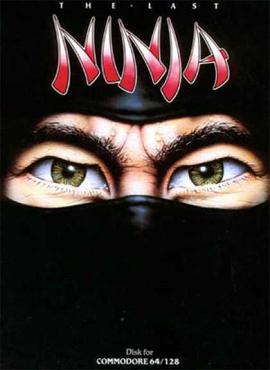
The Last Ninja is an action-adventure game originally developed and published by System 3 in 1987 for the Commodore 64. It was converted to the Apple IIGS, MS-DOS, BBC Micro and Acorn Electron in 1988, the Apple II series in 1989, the Amiga and Atari ST in 1990, and the Acorn Archimedes in 1991.
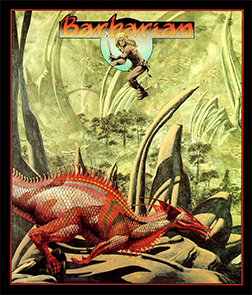
Barbarian is a 1987 platform game by Psygnosis. It was first developed for the Atari ST, and was ported to the Amiga, Commodore 64, MS-DOS, MSX, Amstrad CPC, and ZX Spectrum. The Amiga port was released in 1987; the others were released in 1988. The cover artwork is by fantasy artist Roger Dean.

Predator is a 1987 side-scrolling action game based on the 1987 film Predator, and the first game based on the franchise.

Kingsoft GmbH was a German video game company based in Aachen. The company was founded in 1982 by Fritz Schäfer out of his parents' house in Mulartshütte (Roetgen) to sell his chess simulation game Boss, which he developed the year before. Kingsoft expanded into third-party publishing in 1983, starting with Galaxy by Henrik Wening. Most of their games were released for computers developed by Commodore International, predominantly the Commodore 64, Commodore 16 and later Amiga, and were usually based on other company's titles for different platforms. Kingsoft moved to Aachen in 1987 and established a distribution service before ceasing publishing in favour of distribution in 1993. The company was acquired in March 1995 by Electronic Arts, who retired the Kingsoft name later that year.
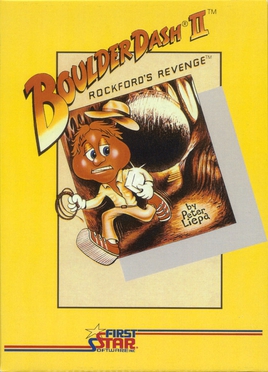
Boulder Dash II is a 2D maze-puzzle video game designed by Peter Liepa and released in 1985 by First Star Software. It is the first sequel to the original Boulder Dash.

Yogi's Great Escape is a 1990 platform game based on the 1987 movie of the same name. It was developed by British studio PAL Developments and published by Hi-Tec Software as a budget game. It was released in Europe for Amiga, Amstrad CPC, Atari ST, Commodore 64, Atari 8bit and ZX Spectrum.
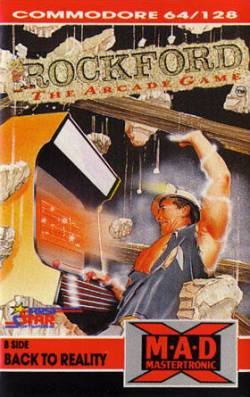
Rockford is a 1988 arcade game developed by Mastertronic's Arcadia Systems as an arcade spin-off of the home computer series Boulder Dash. The original arcade version of Rockford ran on the "Arcadia Multi Select system", an Amiga 500-based system that supported multiple games.
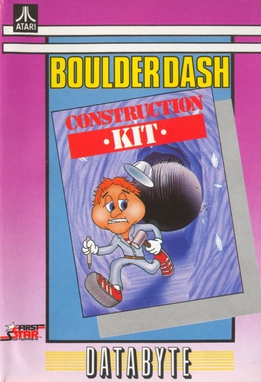
Boulder Dash Construction Kit is the fourth game in the Boulder Dash series. It published for the Commodore 64 and Atari 8-bit family in 1986 by Epyx. Ports were released for the Apple II, Atari ST, Amiga, Amstrad CPC, ZX Spectrum, and MS-DOS. The Spectrum version was rereleased as Boulder Dash IV: The Game. Boulder Dash Construction Kit includes new levels and a level editor.

Cloud Kingdoms is a puzzle game published by Millennium Interactive for the Amiga, Atari ST, Commodore 64, and MS-DOS in 1990. The player controls Terry, a green bouncing sphere, on a quest to recover his magic crystals that have been stolen by Baron von Bonsai. To do so, he must travel through the eponymous Cloud Kingdoms, avoiding enemies and hazards while collecting all of the crystals within the game's time limit. The game was developed by Dene Carter at Logotron, with sounds and music composed by David Whittaker.
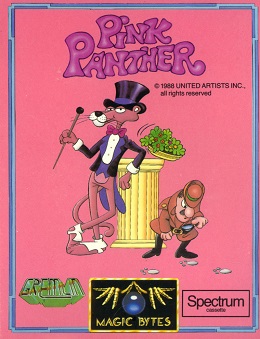
Pink Panther is a 1988 video game based on the character of the same name. It was developed by German company Magic Bytes and published by Gremlin Graphics. It was released in Europe for Amiga, Amstrad CPC, Atari ST, Commodore 64, and ZX Spectrum. Pink Panther was criticized for its control and difficulty, although the Amiga and Atari ST versions received praise for their graphics.



















